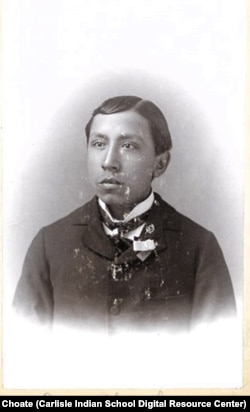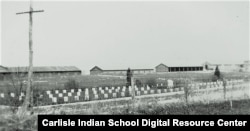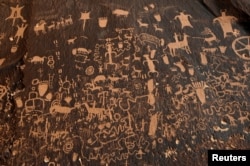New NAGPRA rules aim to speed up compliance
Revisions to the Native American Graves Protection and Repatriation Act (NAGPRA) went into effect January 12.
NAGPRA directs federally funded museums and federal agencies to catalogue all Native American human remains, funerary items, and objects of cultural significance in their collections, to submit the information to a National Park Service database and to work with tribes and Native Hawaiian organizations to repatriate them.
They now have until January 2029 to update their inventories.
Previously, institutions have taken advantage of a loophole in the law allowing them to hold on to artifacts deemed “culturally unidentifiable.” That category has now been removed, and Native American traditional knowledge or geographical information will be sufficient for proving cultural affiliation going forward.
Institutions must now get permission from lineal descendants and/or Native American Tribes or Native Hawaiian Organizations (NHOs) before displaying, giving access to or allowing any research on remains or cultural artifacts.
“Pending consultation with the represented communities, we have covered all cases that we believe contain cultural items that could be subject to these regulations,” Chicago’s Field Museum announced last week.
Harvard University’s Peabody Museum, which has the third-largest collection under NAGPRA, issued no statement but has closed several galleries for “maintenance” – including its Hall of the North American Indian — until early February.
Tribe sues Army for failing to repatriate remains of boarding school students
The Winnebago Tribe of Nebraska this week filed a lawsuit against the U.S. Army asking that it repatriate the remains of two Winnebago children who died at the Carlisle Indian School in Pennsylvania.
Carlisle records show that in September 1895, Samuel Gilbert and Edward Hensley were among a group of 11 youths taken from their families and sent to Carlisle. Both died of pneumonia – Samuel, just weeks after his arrival, and Edward in June 1899. They were both buried in the school cemetery, which is today an Army installation.
Last October, the Winnebago formally requested that the Army repatriate the remains in compliance with NAGPRA.
“Defendants denied Winnebago’s request on the erroneous basis that NAGPRA does not apply to the repatriation of ‘Native American human remains’ …in their possession and control at Carlisle Cemetery,” the complaint states.
A June 2014 memorandum from the Army’s Assistant Chief of Staff for Installation Management clearly states, “NAGPRA applies to all Army Commands, installations, and activities and places affirmative duties on the Army for the protection, inventory, and disposition of Native American cultural items.”
In this case, the Army, says its “disinterment and return” process requires the identification of a “closest living relative” for remains from Carlisle Cemetery to be disinterred, not tribal nations.
“Because the Carlisle students often died as children themselves or died without children, they have no direct descendants and the identification of a “closest living relative” is nearly impossible,” a statement from the Native American Rights Fund says.
Read more:
New York tribes called to review ‘offensive’ artwork in state capitol
New York Governor Kathy Hochul is inviting New York tribes to review artwork in the State Capitol Building in Albany, citing “offensive imagery and distasteful representations of populations.”
“All New Yorkers should feel welcome and respected when visiting the State Capitol,” she said in her 2024 State of the State report. “Indigenous peoples, in particular, are often depicted in artworks in a manner that reflects harmful racial stereotypes and glorifies violence against Indigenous peoples.”
The ceiling of the governor’s reception room features 25 paintings by 20th Century muralist William deLeftwich Dodge. Unveiled in 1931, they depict the military history of New York, including a scene showing French explorer Samuel Champlain “killing first Indian.”
Read more:
Treasure hunter wreaks havoc at historic Pueblo site
A Utah treasure hunter has been charged with a second-degree felony for tunneling more than four meters into a 1,000-year-old archaeological site.
Acting on a tip from a concerned citizen, authorities in Washington County, Utah, say they found Eduardo Humberto Seoane, 51, digging at the ancient Pueblo Indian site that includes 100 petroglyphs that archaeologists believe are at least 500 years old.
“We couldn’t believe what we were seeing,” said Washington County Sheriff’s Office Sgt. Darrell Cashin. “The suspect had power and hand tools out there, and he’d been excavating for quite some time.”
Authorities say Seoane told them he was prospecting for precious minerals, but they discovered that he belongs to several treasure-hunter groups.
“It’s almost impossible to calculate the damage caused by this guy,” said a press release from Trust Lands Administration lead archaeologist Joel Boomgarden. “It is important for people to remember that the archaeological record of Utah is a finite resource. Nobody is making 1,000-year-old ancestral Puebloan sites anymore. Once they are gone, there is no going back.”
Read more:




